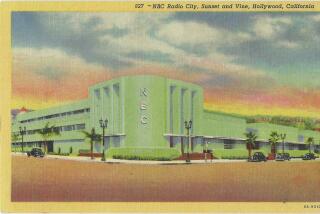Column: Best Kept Secret in L.A. Television
When I left the staff of The Times ago to become the news director at KMEX, the Spanish-language TV station (Channel 34), it was after a great deal of soul searching, plus explanations to co-workers who asked me: “KM ... what?”
Even though KMEX is a station whose newscasts have more viewers than George Putnam or Tom Reddin and almost as many as KABC’s Eyewitness News, it is not that well known except among Spanish-speaking Angelenos.
The first time I heard of KMEX was some eight years ago when a man came to my home and installed a UHF converter on my TV set so I could write an occasional article about the state’s programs in The Times.
From time to time, I wrote a piece and then lost interest.
I became a foreign correspondent in Vietnam, Mexico, the Caribbean and Central America. In January, 1968, I came back to Los Angeles to cover the Mexican-American story which was changing radically since I had last covered the community.
Starting from zero, KMEX, I learned, was now reaching about 1.5 million viewers and had become first commercial UHF station to win a National Academy of Television Arts and Sciences award—for its documentary on prominent Mexican-Americans.
Impressed with figures
Advertisers, at first skeptical about Spanish-language television, finally became impressed with the figures: Los Angeles is the sixth largest Spanish market in the world. And though New York is the fifth largest Spanish market, national advertisers have been more attracted by Los Angeles where the average Latin yearly income is $5,762 as compared to $4,610 in New York.
But news was what I was interested in. I learned that under the direction of Joseph S. Rank, KMEX’s general manager, and Danny Villanueva, formerly news director and now station manager, KMEX had become the prime communicator in the Southland’s Latin community.
Los Angeles’ “best kept secret” as Rank puts it, is that KMEX’s newscast (Noticiero 34) has astounding ratings. Med-Mark Inc., which conducts surveys of UHF-station audiences, reports that Noticiero 34 (Monday through Firday 6:30-7:30 p.m.) has a daily audience of just under 300,000. George Putnam’s News, according to American Research Bureau figures, has an audience of just under 200,000 while Tom Reddin’s News is 150,000 at 5 p.m. and 100,000 at 10 p.m.
The statistics show that KMEX news, with close to 300,000 viewers, is just a few thousand below KABC’s Eyewitness News and KNBC News.
John Tebble in a Saturday Review article entitled “Newest TV Boom: Spanish-Language Stations” says Med-Mark Inc. found “illuminating” statistics in its surveys of Spanish-language television.
”... while many Americans with Spanish surnames were bilingual,” writes Tebbel, “they strongly preferred Spanish-language broadcasting even though they had no trouble understanding the English programs. Moreover, they were quick to develop a loyalty to advertised produced—a brand loyalty far exceeding any exhibited by Anglo-American viewers—and they were also more receptive to advertisers’ promotional campaigns.”
One Myth Dispelled
Who are most of these people who watch Spanish-language television? Old people from the old country who never learned English? Med-Mark survey dispel this myth. At KMEX, for instance, among the largest audience groups are men ages 18 to 34 and women 18 to 49.
The reason, undoubtedly, is a newly gained pride in the Spanish language by the nation’s second largest minority. The California Supreme Court recently recognized the importance of the Spanish-language news media when it ruled that Spanish-speaking citizens, who do not speak English, are entitled to vote just like any other American citizen. The reason, the court said, is that the Spanish news media furnishes enough information to make Spanish-speaking people qualified voters.
It is estimated that by 1975 there will be 15 million Spanish-speaking people in the United States. KMEX, part of the Spanish International Network, which includes KWEX in San Antonio, WXTV in New York and stations in five border cities, is now reaching some 10 million Latins.
I still miss newspaper work, but it’s good to know that the phrase, “Aqui se habla espanol” has a future.
More to Read
Sign up for Essential California
The most important California stories and recommendations in your inbox every morning.
You may occasionally receive promotional content from the Los Angeles Times.











